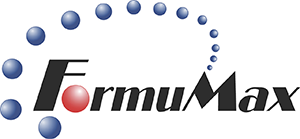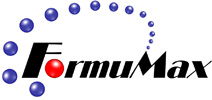
Trans-Hi™ is a superior transfection reagent capable to compete against the leading products on the market. It is based on a proprietary polymer technology. It forms stable nanoparticles with DNA and rapidly releases the DNA molecules upon endocytosis into the cytoplasm. It is a broad spectrum transfection regent offering superior and reproducible transfection efficiency on the common cells such as Hela, CHO, HEK293 and many hard-to-transfect mammalian cells with minimal toxicity. Trans-Hi™is very cost-efficient and 1.0mL is sufficient for over 660 transfections in 24 well plates.
Key Features for Trans-HiTM
- Excellent transfection for single DNA transfection or multi DNA co-transfection
- Rapid onset and long-lasting transfection
- Suitable for very long DNAs
- Simple and easy to use transfection procedure
- Robust and reproducible transfection
- High level of recombinant protein production
- Very cost efficient
- Long shelf-life: 12 months
Specifications:
| Product type: | In vitro cell transfection reagent | |
| Applications | Plasmid transfection, protein overexpression | |
| Technique: | Polymer-based DNA nanoparticles | |
| Cell type: | Established cell lines, primary cells, hard-to-transfect cellsAdherent cells and suspension cells | |
| Sample type: | Plasmid DNA | |
| Serum compatibility: | Yes | |
| Product size: | 0.5, 1.0 and 10x1.0 mL | |
| Number of transfections | Up to 660 in 24-well plates with 1.0mL reagentup to 330 transfections in 6-well plates | |
| Shelf-life: | 12 months or longer when store refrigerated (2-8°C) | |
| Shipping condition: | Room temperature |
Protocols
Trans-Hi™General Protocol For In Vitro Transfection in Mammalian Cells![]()
Trans-Hi™ - Protocol for Transfecting 293 and CHO Suspension Cells![]()
Trans-Hi™ - Protocol for Generation of rAAV![]()
Trans-Hi™-Technical Tips For Good In Vitro Transfection![]()

Comparison study ofIn vitro plasmid DNA transfection of Trans-HiTM and Lipofectamine®2000in HEK293T cells with GFP vector using the manufacture recommended reagent/DNA ratio of 3:1 (µL/µg) and 0.5µg DNA per wellused for both products in 24 well plate 30 hours post transfection.
Trans-Hi™/DNA ratio (µL/µg) (HEK293T)

Study of the transfection efficiency as a function of transfection reagent/DNA ratio indicating optimal tranfection efficiency achieved at Trans-Hi™/DNA ratio of 3:1 (µL/µg) (HEK293T cells in24 well plate 30 hours post transfection, 0.5ug DNA per well).

Head-to-head comparisonTrans-Hi™ against Lipofectamine 2000HEK293A cells with GFP vector (reagent/DNA ratio of 3:1(µL/µg, 0.5ug per well), 24 well plate 48 hours post transfection).
| Trans-Hi™ | Lipofectamine-2000 | |||||
| Time | Day 1 | Day 2 | Day 3 | Day 1 | Day 2 | Day 3 |
| HEK293A (%) | 79.5 | 93.4 | 93.3 | 75.7 | 89.4 | 50.6 |

Comparison study ofIn vitroplasmid DNA transfection of Trans-Hi™and Lipofectamine®2000in Hela cellswith GFP vector ((reagent/DNA ratio of 3:1(µL/µg, 0.5ug per well),24 well plate 48 hours post transfection).
Broad Transfection Spectrum for Mammalian Cell Types
Cell Lines | Efficiency (% GFP) |
COS-7 | 85 - 90% |
Hela | 85 - 90% |
HEK-293T | 85-90% |
NIH 3T3 | 75% |
A549 | 75% |
Hep3D | 65-75% |
SHEP | 65-70% |
CaCo2 | 60% |
HepG2 | 70% |
SKOV3 | 65% |
MCF-7 | 65-70% |
3T3-442A | 35-40% |
CHO | 80-90% |

FormuMax科学公司位于加利福尼亚州北部硅谷的中心地带,是一家专业的药品配送公司,致力于满足医药/生物技术、化妆品和保健工业的配方开发外包的日益增长的需求。经营理念是成为**的伙伴,作为药物交付的***,特别是在制定具有挑战性的化合物脂质体和其他新的纳米技术。FormuMax拥有一支技术团队,在药物递送领域拥有***的专业知识,特别关注脂质体和其他基于脂质的技术。它们目前提供基础研究,配方可行性,定制配方准备,配方表征和分析科学的合同服务。FormuMax是**家提供大量预成型脂质体试剂的在线商店。已经成功地为来自世界各地的大学实验室、研究中心和各种行业的客户提供了服务和/或产品。
FormuMax供应主要产品:
Clophosome-氯膦酸盐脂质体
FormuMax提供两种预埋有氯磷酸盐分子的中性脂质体产品,该产品单次静脉或腹腔注射后可在脾脏经巨噬细胞清除率可达80-90%,并具有高度活性、稳定的理化性质(长期冰箱存放后仍保持均一性及悬浮特性),粘滞度低使用简便,适用于静脉、腹腔、皮下、鼻腔、气管等多种方式给药。
Doxoves-盐酸多柔比星脂质体
FormuMax可提供脂质定制的盐酸多柔比星脂质体(定制内容为脂质成分及脂质体大小)。FormuMax提供的产品为Doxoves,具有高度的产品稳定性和一致性,紧密的粒径分布和高效的药物包埋效率(高达4.0mg/mL(40mMlipid)的包埋药物浓度)。Doxoves系列产品在产品特性、稳定性及药代动力学特性上可媲美商业产品Doxil。
DrugLoadedliposomes
FormuMax提供多款包埋活性药物的脂质体产品,包括DoxorubicinHCl(含2.0mg/mL及4.0mg/mL两种浓度),IrinotecanHCl(2.0mg/mL),TopotecanHCl(2.0mg/mL),产品线仍在持续更新中。
预制脂质体
FormuMax供应的预制脂质体产品囊括多种通用的脂质体类型,使用世界*的优质脂类原料。该系列产品易于使用,稳定性、可靠性及可重复性高,节省时间和成本,并可为研究人员提供定制脂质体服务。目前FormuMax提供聚乙二醇化/非聚乙二醇化的常用脂质体,以及含浓度梯度Ammonium的脂质体
阳离子脂质体
FormuMax供应一系列的阳离子脂质体,用于需带正电荷的脂质体或细胞转染质粒DNA、反义/干扰RNA等。
荧光脂质体
FormuMax供应预制荧光标记的脂质体,包括常规荧光脂质体、生物素化的荧光脂质体以及Avdinized化的荧光脂质体,另外还提供客户定制的荧光脂质体(脂类及染料可选)。
脂质体制备薄膜
FormuMax供应一系列不同规格的聚碳酸酯薄膜,用于脂质体挤出制备。
ebiomall.com






>
>
>
>
>
>
>
>
>
>
>
>
GFP发出绿色荧光的原理是Ca离子进入GFP的beta-barrel结构中引起的特定能级,因此只要这个结构仍然保持着,就可以发出荧光。
由于GFP的beta-barrel结构非常稳定,一些版本的GFP蛋白(如EGFP)甚至能抵抗94C的高温几分钟而不完全变性,因此想在溶液状态下去掉GFP的荧光是很难的,一般需要用光漂白法。
基于其非常稳定的结构,即便细胞被固定了,仍然会有一部分的GFP蛋白保持其构象而发出荧光。此时荧光可能较弱。在荧光显微镜下是有可能看得到的。
DXY721认为:
悬浮细胞和贴壁细胞在转染过程中差别不大,主要差别在于转染后的筛选,当然如果你做的是瞬时转染就不存在筛选的问题了。
其实转染的过程很简单,问题是能不能转的进去的,转染率能有多少,转进去是否可以稳定表达目的蛋白等等。
我们也是用脂质体做悬浮细胞的转染,说明书上都有具体的操作过程,将脂质体和目的基因按比例混合,然后加到细胞悬液里就OK了,说的简单,实际上还是有一些细节要注意的,比如脂质体和目的基因混合的比例,转染的细胞数,细胞的代数,细胞的状态,有的还要求在转染的前一天传代一次,不过不要怕,这些在脂质体说明书上都有明确的说明,按照说明书做就可以了。
jinghuanlv认为:
悬浮细胞和贴壁细胞转染还是有很大不同的。
脂质体转染的原理基于电荷吸引原理,先形成脂质体-DNA复合物,散布在细胞周围,然后通过细胞的内吞作用,将目的基因导入细胞内,而脂质体复合物与贴壁细胞的接触机会比悬浮细胞高出很多倍,所以,脂质体转染时悬浮细胞的转染效率要明显低于贴壁细胞。
我们实验室转染悬浮细胞是用的电穿孔法,目前为止,悬浮细胞转染的最好方法还是电转,我们实验室用的电转仪是Bio-Rad的,使用条件是电压250V,电容975uF,效果不错,不妨一用。
做的比较好的,一般都是上海地区的,你可以看下基尔顿生物。
目标蛋白对细胞有毒性,导致细胞死亡;
转染试剂以及DNA用量信息需要优化,否则对细胞具有伤害;
细胞贴壁转染之后没有正常换液。
建议:考虑对目标蛋白进行截短构建、尝试其他细胞系统;摸索转染试剂以及DNA用量信息,如果转染试剂毒性太大,可以考虑尝试义翘转染试剂sinofection;对转染后的细胞进行换液处理,如果细胞状态感觉不够理想,可以考虑添加一些血清来帮助细胞恢复健康。
以上所有分析、建议的前提是,细胞培养、无菌操作等等都没有问题。祝顺利,加油~
脂质体是磷脂分散在水中时形成的脂质双分子层,又称为人工生物膜。
阳离子脂质体表面带正电荷,能与核酸的磷酸根通过静电作用将DNA分子包裹入内,形成DNA一脂复合体,也能被表面带负电荷的细胞膜吸附,再通过膜的融合或细胞的内吞作用,偶尔也通过直接渗透作用,DNA传递进入细胞,形成包涵体或进入溶酶体 其中一小部分DNA能从包涵体内释放,并进入细胞质中,再进一步进入核内转录、表达。
影响转染试验的因素:
1转染试剂跟细胞系不匹配
转染试剂跟细胞系也是讲究配合默契的,使用同一种试剂,不同细胞系转染效率通常不同。但细胞系的选择通常是根据实验的需要,因此在转染实验前应根据实验要求和细胞特性选择适合的转染试剂。每种转染试剂都会提供一些已经成功转染的细胞株列表和文献,通过这些资料可选择最适合实验设计的转染试剂。当然,最适合的是高效、低毒、方便、廉价的转染试剂。
2细胞状态变化
因为有些细胞系是不稳定的,可能随着培养时间的改变,培养条件的不同,不同的选择压力,可能引起不同的克隆选择。因此就算是同一个细胞系,在不同条件下转染能力的差异可能会
很大
(1)转染试剂与细胞不匹配
细胞转染最适合的不是原代细胞,也不是传代很多次的细胞。这是因为细胞培养在实验室中保存数月和数年后会经历突变,总染色体重组或基因调控变化等而演化。这会导致和转染相关的细胞行为的变化。最适合转染的细胞是经过几次传代后达到对数生长期的细胞,细胞生长旺盛,最容易转染。
(2)把握时机
没错!转染也有适当的时机,相比较非分裂细胞——分裂细胞往往要比静止细胞更易于摄取并表达外源DNA。因此对大多数转染操作而言,细胞都在转染当天或前一天种板。
同样重要的是细胞在种板进行转染时不应处于过度生长的状态,如癌细胞数量过多,互相叠加,营养物质耗竭,代谢废物积聚,转染率低下也是很正常的!
因此,一定要在最适细胞密度时转染,才能获得较高的转染率。不同的转染试剂,要求转染时的最适细胞密度各不相同,即使同一种试剂,也会因不同的细胞类型或应用而异。
(3)微生物来捣乱
培养物可被细菌、酵母、真菌、病毒、支原体、甚至其他细胞种类所污染。各种污染都会导致产生错误的结果。
(4)交叉污染
如果同一个实验室同时培养不同种类的细胞,很同意发生“细胞串门”的现象,造成交叉污染。
3转染方法
不同转染试剂有不同的转染方法,但大多大同小异。转染时应跟据具体转染试剂推荐的方法,但也要注意,因不同实验室培养的细胞性质不同,质粒定量差异,操作手法上的差异等,其转染效果可能不同,应根据实验室的具体条件来确定最佳转染条件。
(1)血清
转染后未及时加入血清,会导致细胞大量死亡。一般要在转染后的4-6小时换液且换为有血清的培养基。也可以在原来的无血清培养基里面滴加血清。这个时候,最好不要换液,不要打扰细胞,让它安安静静地休息。但是也不能过早加入血清。过早的话,会引起未转染的细胞疯狂生长。那么,什么是最佳时机呢?在20%的细胞变圆的时候,就是加血清的最佳时机。
不过要特别注意:血清是一种包含生长因子及其它辅助因子的不确切成分的添加物,对不同细胞的生长作用有很大的差别。血清质量的变化直接影响细胞生长,因此也会影响转染效率。新加培养基的预热对细胞转染很有帮助。
(2)DNA质量
DNA质量对转染效率影响非常大。一般的转染技术(如脂质体等)基于电荷吸引原理,如果DNA不纯,如带少量的盐离子,蛋白,代谢物污染都会显著影响转染复合物的有效形成及转染的进行。
4载体构建
转染载体的构建(病毒载体,质粒DNA,RNA,PCR产物,寡核苷酸等)也影响转染结果。因此选择组成或可调控,强度合适的启动子也很重要,同时做空载体及其它基因的相同载体构建的转染正对照可排除毒性影响的干扰。
所以转染用的质粒首先要保证数量,一般为2μg以上。质粒纯度不够或者含有细菌LPS或其他对细胞有毒害作用的物质,也会影响转染效率。这个时候,就应该对质粒进行纯化和浓缩。
以上就是细胞转染率低的主要原因了,在实验过程中有没有遇到什么棘手的问题呢,欢迎留言讨论
其次要看下你选择单位的规模如何,做的比较好的,还是上海这边的,你可以看下基尔顿生物,原代细胞培养,动物造模,整体课题外包。









